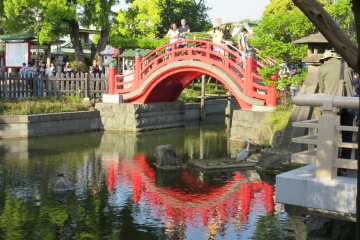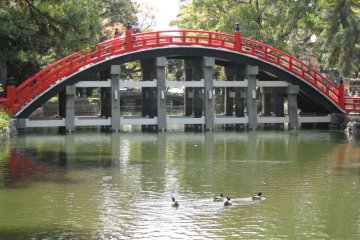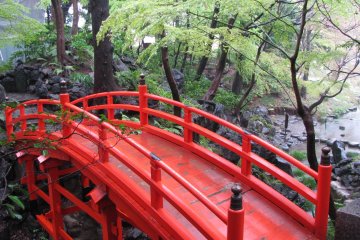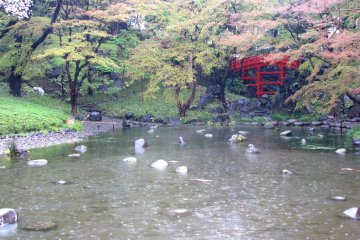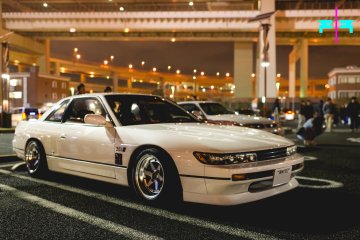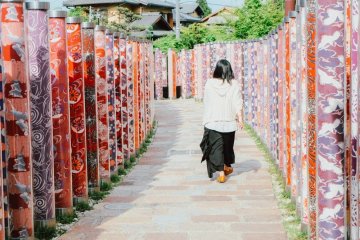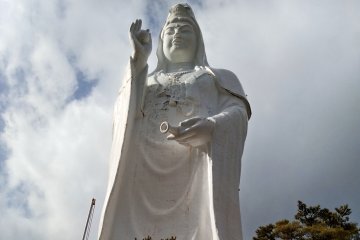When we think about a Japanese bridge, or hashi, often we imagine a red, arched bridge. That type of a bridge is known as soribashi in Japanese, and came from China in the Heian period (794-1185). During this time frame, gardens were private and belonged to wealthy people, and it was popular to sail boats with food and drinks as a form of entertainment. The arched construction of bridges allowed for sailing under them easily.
Garden bridges used to have a symbolic meaning along with a practical one. A bridge symbolizes traveling and transition from one state to another, or from one ‘world’ to another. Stepping on a bridge gives us a choice – either we cross it, we take time on the bridge, or we turn back. Garden bridges also symbolize the way from the world of humans to the world of nature, to paradise and immortality. In early gardens, bridges led to a central island called nakajima, which symbolized the Pure Land of Amida Buddha.

Old Japanese bridges are made of wood and stone, but many modern bridges are made of concrete and metal. Bridges which are made from a whole stone are valued the most and are known as ishibashi.

Edo (modern-day Tokyo) grew from a small fishing village on the Sumidagawa River. Water was very important in the life of a city that centered around water transport for carrying goods and people. Trading places were located right on the riversides. Numerous channels crossed the city and bridges connecting land were quite important. An exact copy of the huge wooden bridge of Edo can be seen (and walked over!) at the Edo-Tokyo Museum. The very first bridge across the Sumidagawa River was built in 1594.

Some of Japan's bridges have legends or history behind them. Nikko's Shinkyo Bridge has an ancient legend about a Buddhist monk who wanted to reach the top of a hill but couldn’t cross the Dayagawa River. He asked the Gods for help and they sent two snakes that intertwined and formed a bridge. Today’s Shinkyo Bridge was built in 1636. Another famous bridge, the Gojo Bridge in Kyoto, is connected with the name of the legendary samurai Minamoto no Yoshitsune. The most impressive old Kintai Bridge located in Iwakuni city was built in 1673.

Bridges are an essential part of modern Japan, too. One of the most beautiful modern bridges is Tokyo's Rainbow Bridge, which leads to Odaiba Island.
Elena Lisina @shiroi.tenshi
I am interested in Japanese art, crafts, history and Shinto religion. Photography is my hobby, and there are many amazing places to capture in Japan.





































